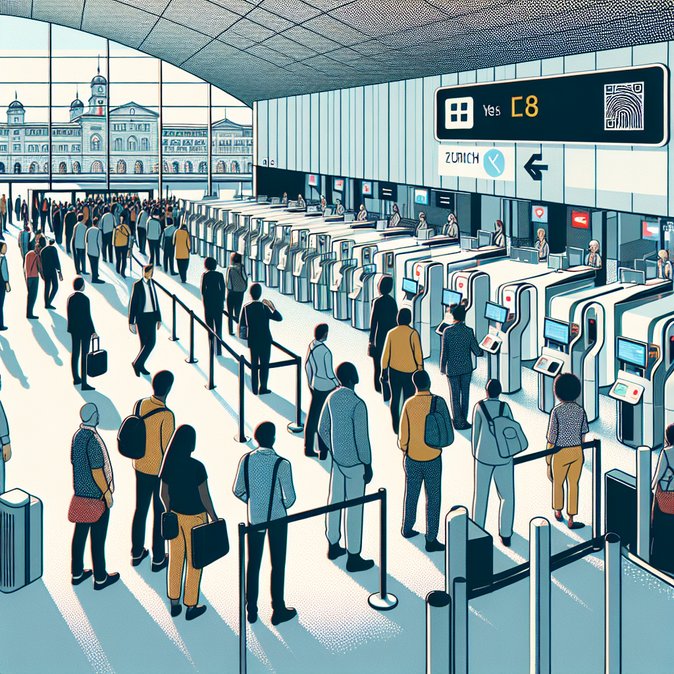
Zurich Airport announced on 23 November that all 52 self-service kiosks and e-gates linked to the EU Entry/Exit System (EES) are now live, making it the last major Swiss hub—after Geneva and Basel—to transition fully to biometric border processing. The system went quietly online on 21 November following a two-week soft-launch supported by German security-tech provider Secunet.
Under EES, third-country nationals must enrol four fingerprints and a live facial image the first time they cross a Schengen external border. Subsequent trips require only a passport scan and facial match, with the central database automatically calculating remaining days in the 90/180-day rule. During the first 48 hours of full operation, first-time enrolments averaged 7–10 minutes, but peak-hour queues stretched to 40 minutes, prompting airlines to recommend 90-minute connection buffers for long-haul transfer passengers.
![Zurich Airport Completes EU Entry/Exit System Roll-Out—Biometrics Now Mandatory for Non-EU Arrivals]()
For corporate travellers, the upgrade is a double-edged sword. Frequent flyers from the US or UK will clear immigration faster on repeat visits, but project teams arriving together may hit bottlenecks if several colleagues need first-time enrolment. Travel managers should therefore stagger flight itineraries or request meet-and-assist services until passenger flows stabilise.
The Zurich Cantonal Police, which is responsible for border control, said it has added 30 officers per shift for the first week and will keep contingency lanes open for passengers with tight connections. The airport’s digital partners are also rolling out an English-language pre-arrival video that explains the process to reduce “trial-and-error” at the kiosks.
EES is the EU’s biggest border-control reform in decades. Full implementation at all external crossings is scheduled for 10 April 2026, after which Schengen states will phase in ETIAS. Multinationals should therefore expect two successive layers of change: biometric enrolment at the airport now, and mandatory travel authorisations from late 2026.
Under EES, third-country nationals must enrol four fingerprints and a live facial image the first time they cross a Schengen external border. Subsequent trips require only a passport scan and facial match, with the central database automatically calculating remaining days in the 90/180-day rule. During the first 48 hours of full operation, first-time enrolments averaged 7–10 minutes, but peak-hour queues stretched to 40 minutes, prompting airlines to recommend 90-minute connection buffers for long-haul transfer passengers.

For corporate travellers, the upgrade is a double-edged sword. Frequent flyers from the US or UK will clear immigration faster on repeat visits, but project teams arriving together may hit bottlenecks if several colleagues need first-time enrolment. Travel managers should therefore stagger flight itineraries or request meet-and-assist services until passenger flows stabilise.
The Zurich Cantonal Police, which is responsible for border control, said it has added 30 officers per shift for the first week and will keep contingency lanes open for passengers with tight connections. The airport’s digital partners are also rolling out an English-language pre-arrival video that explains the process to reduce “trial-and-error” at the kiosks.
EES is the EU’s biggest border-control reform in decades. Full implementation at all external crossings is scheduled for 10 April 2026, after which Schengen states will phase in ETIAS. Multinationals should therefore expect two successive layers of change: biometric enrolment at the airport now, and mandatory travel authorisations from late 2026.






